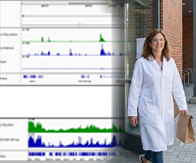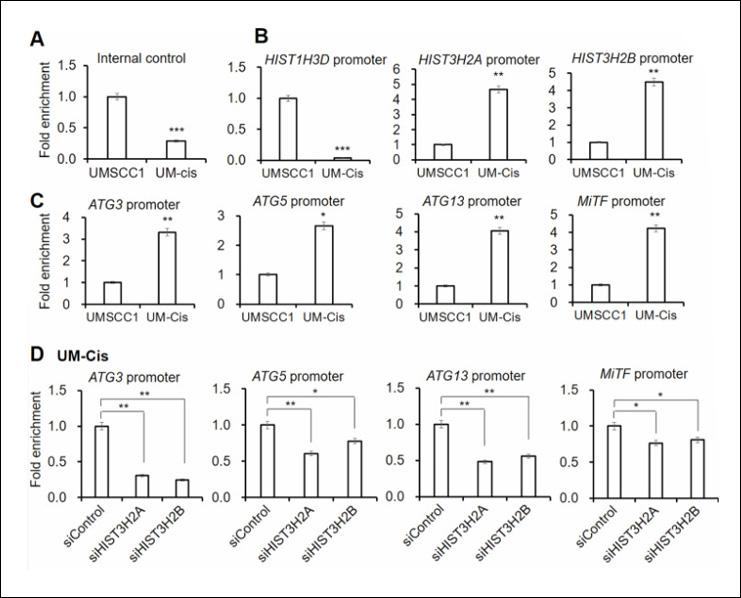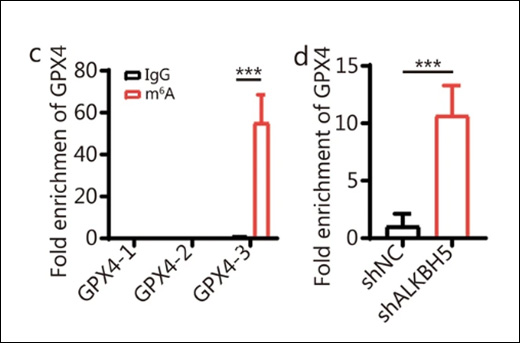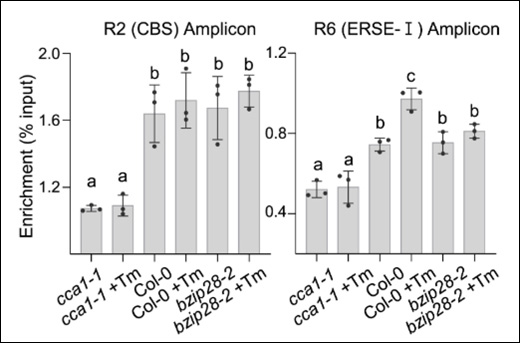Loeb EJ et. al. (March 2024). Capsid-mediated control of adeno-associated viral transcription determines host range Cell Rep. 43(3):113902.
The study investigated the mechanisms by which the capsid of adeno-associated virus (AAV) controls viral transcription and determines host range. By swapping the VP1 N terminus between primate and non-mammalian AAVs, researchers identified a minimal component of the capsid that controls viral transcription, leading to enhanced transduction efficiency in human cells and mouse tissue. This study suggests that the AAV capsid has evolved mechanisms to recruit host factors and regulate transcription, contributing to its ability to infect specific vertebrate species.
Products Used: EpiQuik Chromatin Accessibility Assay Kit
Song N et. al. (March 2024). NaWRKY70 is a key regulator of Nicotiana attenuata resistance to Alternaria alternata through regulation of phytohormones and phytoalexins biosynthesis New Phytol.
The study investigated the role of NaWRKY70 in regulating Nicotiana attenuata's resistance to the fungal pathogen Alternaria alternata. NaWRKY70 was found to control the biosynthesis of jasmonate (JA), abscisic acid (ABA), and the phytoalexin capsidiol through direct binding to specific gene promoters, providing new insights into plant defense mechanisms.
Products Used: EpiQuik Plant ChIP Kit
Liu J et. al. (March 2024). YTHDC1/CRM1 Facilitates m6A-Modified circRNA388 Nuclear Export to Induce Coelomocyte Autophagy via the miR-2008/ULK Axis in Apostichopus japonicus J Immunol.
The article investigates the role of m6A-modified circRNA388 in the innate immunity of the sea cucumber Apostichopus japonicus. Results show that m6A-modified circRNA388, mainly detected in the cytoplasm, promotes coelomocyte autophagy and reduces intracellular Vibrio splendidus levels by sponging miR-2008 and activating the AjULK-mediated autophagy pathway. The nuclear export of m6A-modified circRNA388 is facilitated by AjYTHDC1 and AjCRM1, highlighting their roles in regulating circRNA function in sea cucumber immunity.
Products Used: EpiQuik CUT&RUN m6A RNA Enrichment (MeRIP) Kit
Tu W et. al. (February 2024). The m6A demethylase fat mass and obesity-associated protein mitigates pyroptosis and inflammation in doxorubicin-induced heart failure via the toll-like receptor 4/NF-κB pathway Cardiovasc Diagn Ther. 14(1):158-173.
The study explored the role of the m6A demethylase FTO in mitigating pyroptosis and inflammation in doxorubicin-induced heart failure (HF) via the toll-like receptor 4 (TLR4)/NF-κB pathway. Results show that FTO reduces TLR4 expression by demethylating its mRNA, thereby reducing apoptosis, inflammation, and pyroptosis in cardiomyocytes, highlighting a potential therapeutic target for doxorubicin-induced HF.
Products Used: EpiQuik m6A RNA Methylation Quantification Kit (Colorimetric)
Germain L et. al. (February 2024). The flame retardant triphenyl phosphate alters the epigenome of embryonic cells in an aquatic in vitro model J Appl Toxicol.
The study explores how exposure to the flame retardant triphenyl phosphate (TPhP) affects the epigenome of embryonic cells in an aquatic in vitro model using trout cell lines. Results indicate that TPhP exposure alters histone modification and DNA methylation profiles in steelhead trout embryonic cells, suggesting potential impacts on gene expression in metabolic and estrogenic pathways, with possible multigenerational effects on human and ecosystem health.
Products Used: MethylFlash Global DNA Methylation (5-mC) ELISA Easy Kit (Colorimetric)
Dubey SK et. al. (February 2024). Histone deficiency and hypoacetylation in the aging retinal pigment epithelium Aging Cell. :e14108.
The article explores how aging affects histone levels and acetylation in the retinal pigment epithelium (RPE) and retina of mice. It reveals a global reduction of histones in aged RPE/choroid but not in the neural retina, highlighting a potential link between histone dynamics, cellular senescence, and aging in the RPE.
Products Used: EpiQuik Total Histone Extraction Kit
Konno R et. al. (March 2024). Universal pretreatment development for low-input proteomics using lauryl maltose neopentyl glycol Mol Cell Proteomics. :100745.
The article investigated the use of lauryl maltose neopentyl glycol (LMNG) in low-input proteomics, presenting a method that reduces protein and peptide loss while preventing mass spectrometry contamination. The LMNG-assisted sample preparation (LASP) method significantly improves peptide recovery in low-input proteomics, enabling the identification of a high number of proteins from single cells with high throughput.
Products Used: EpiMag HT (96-Well) Magnetic Separator




 Cart (0)
Cart (0)













